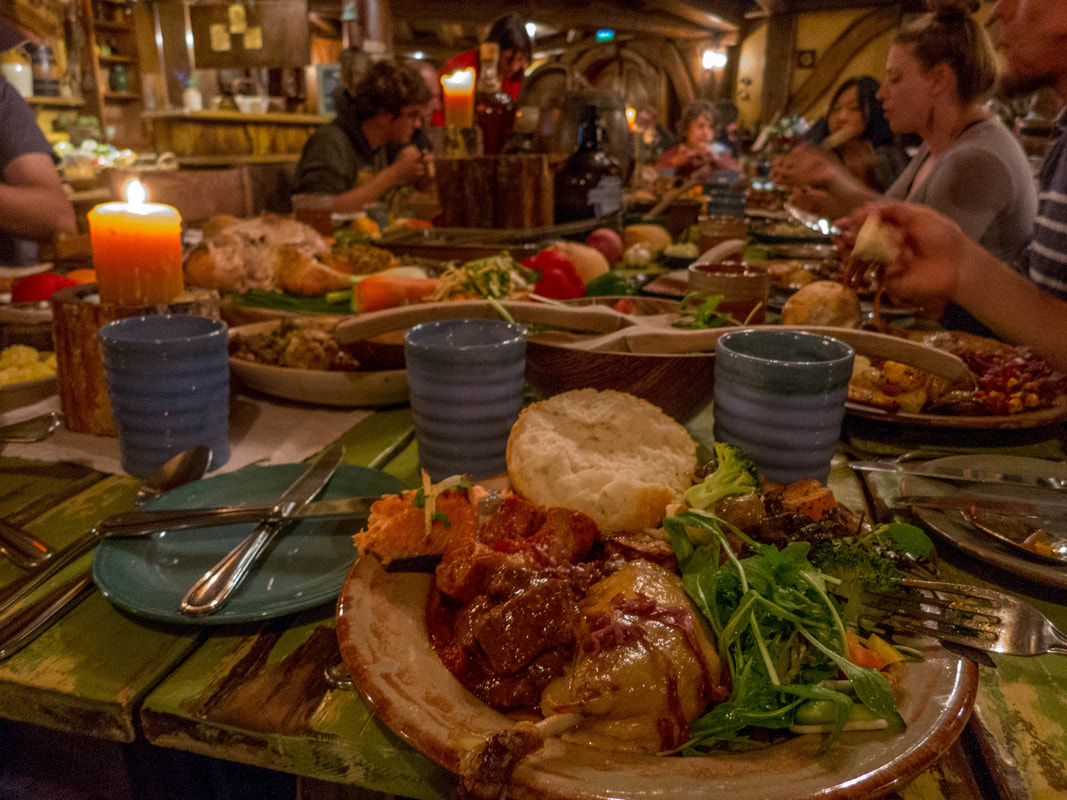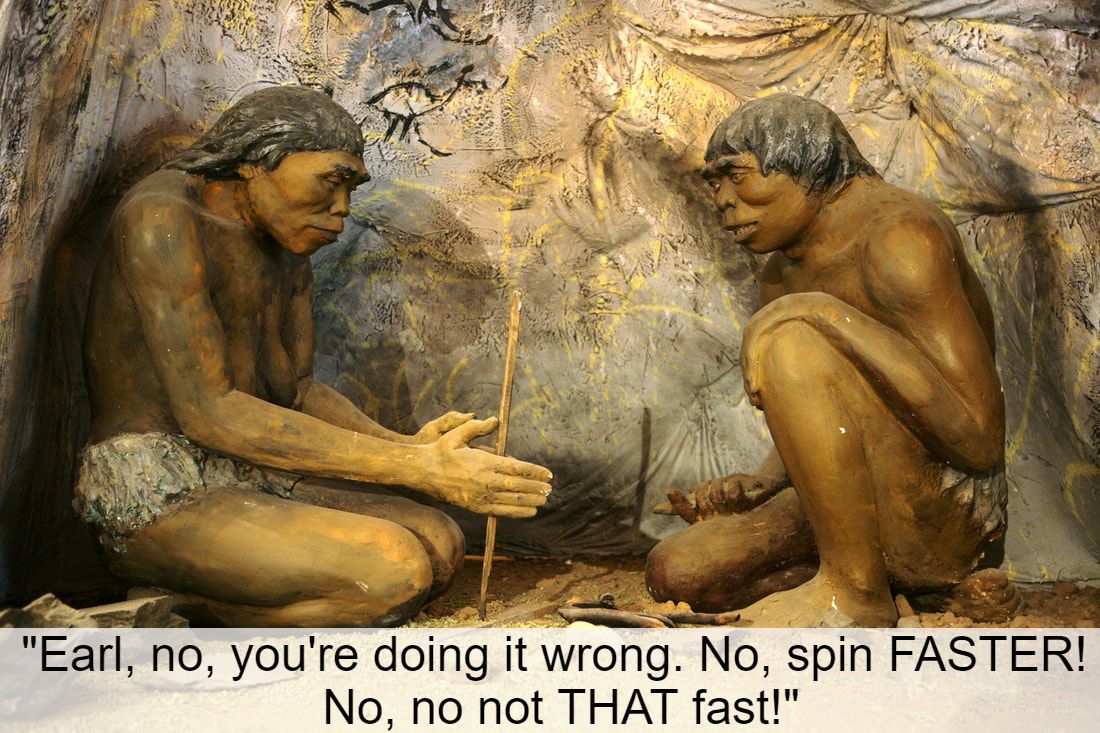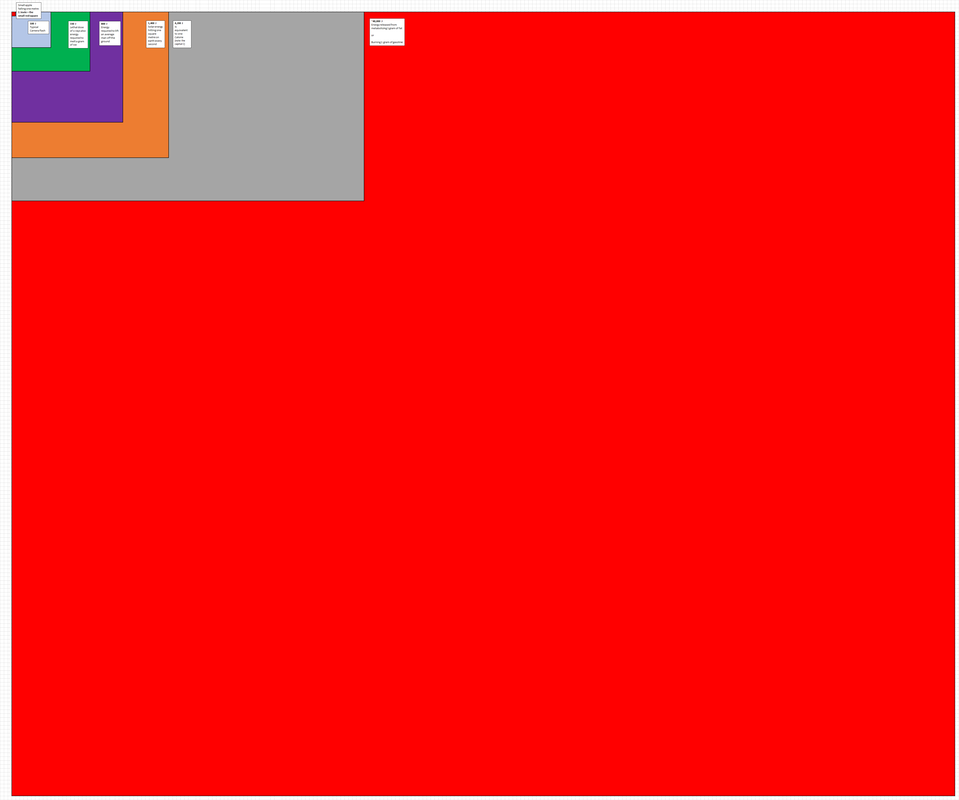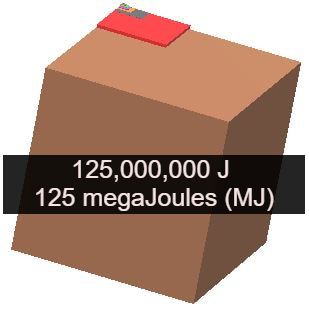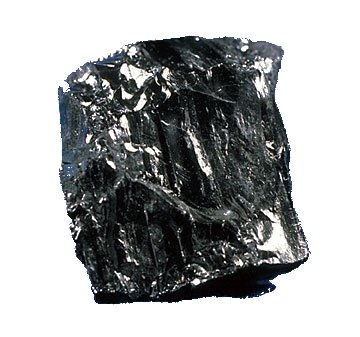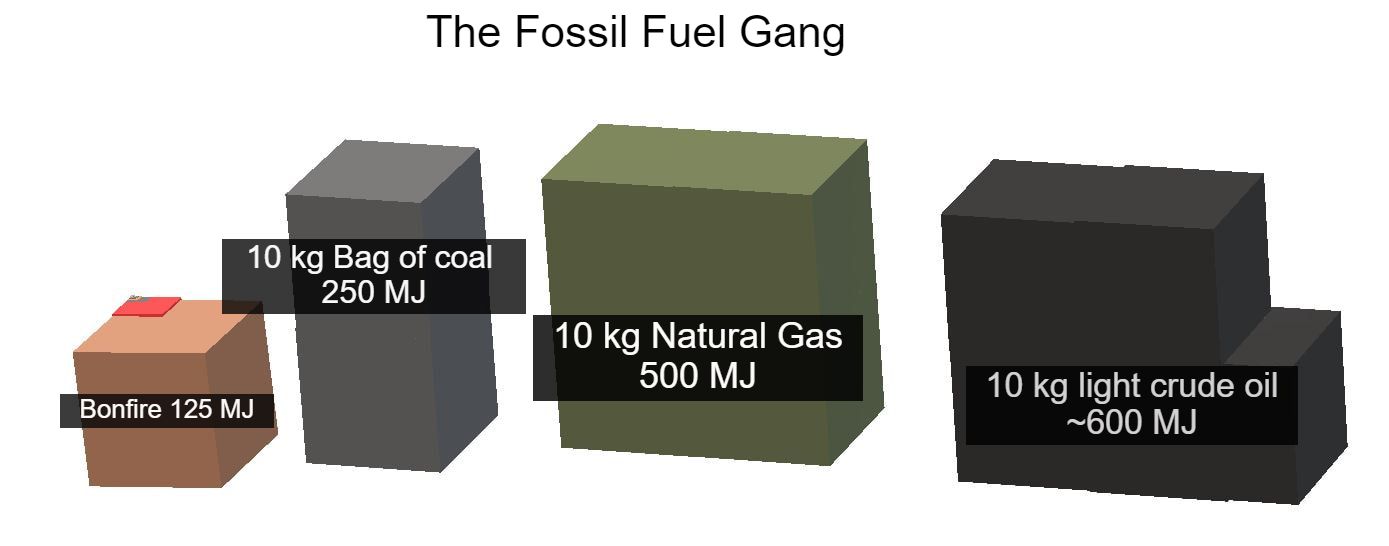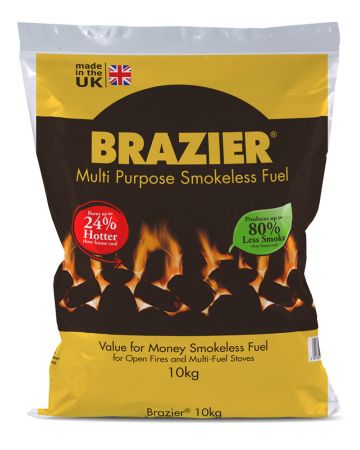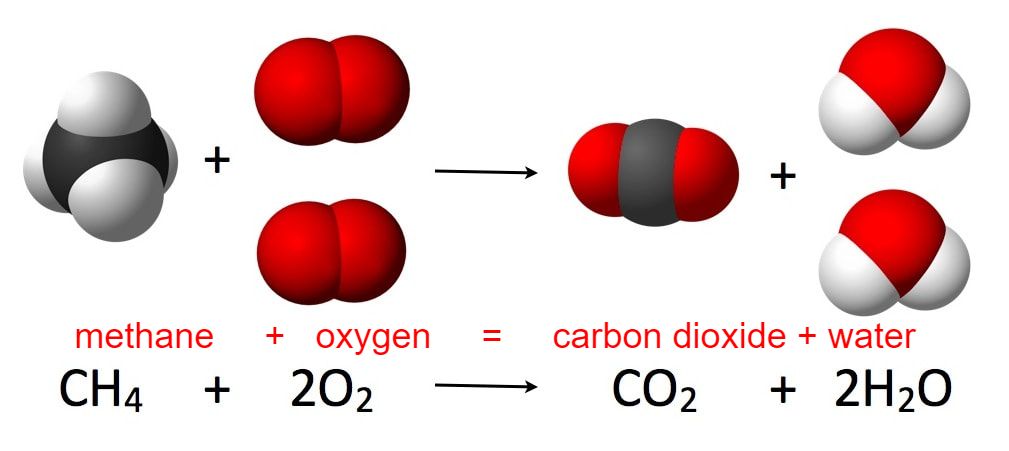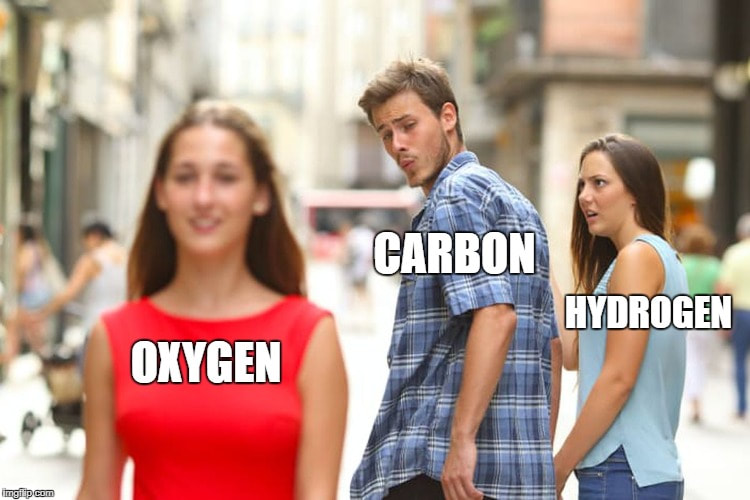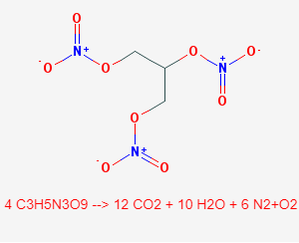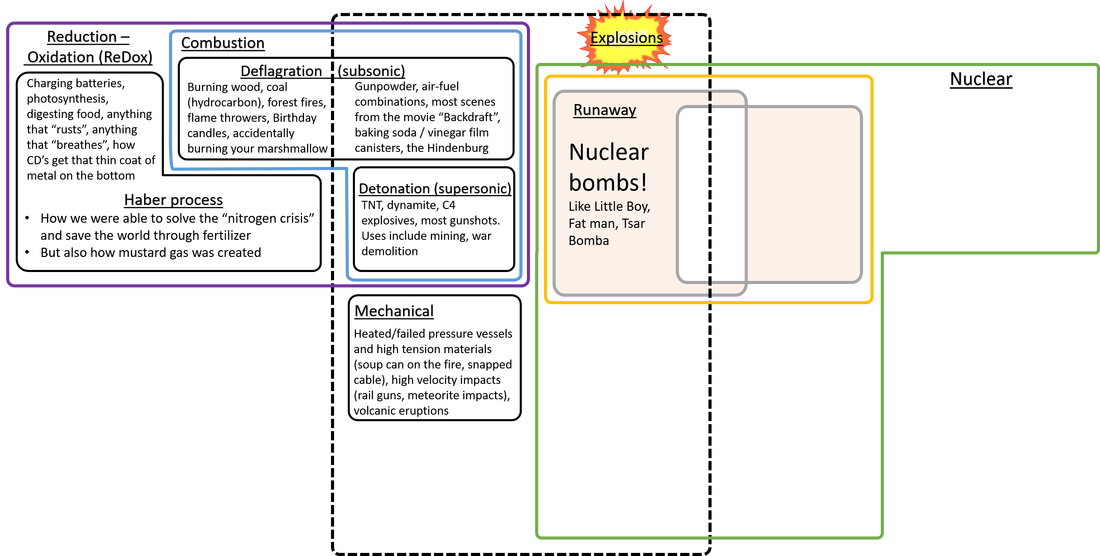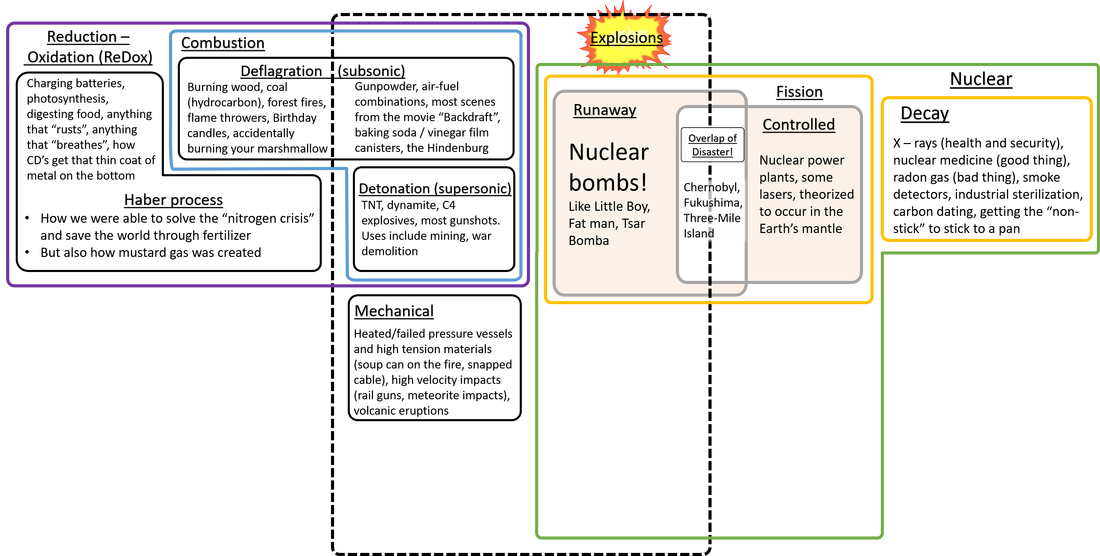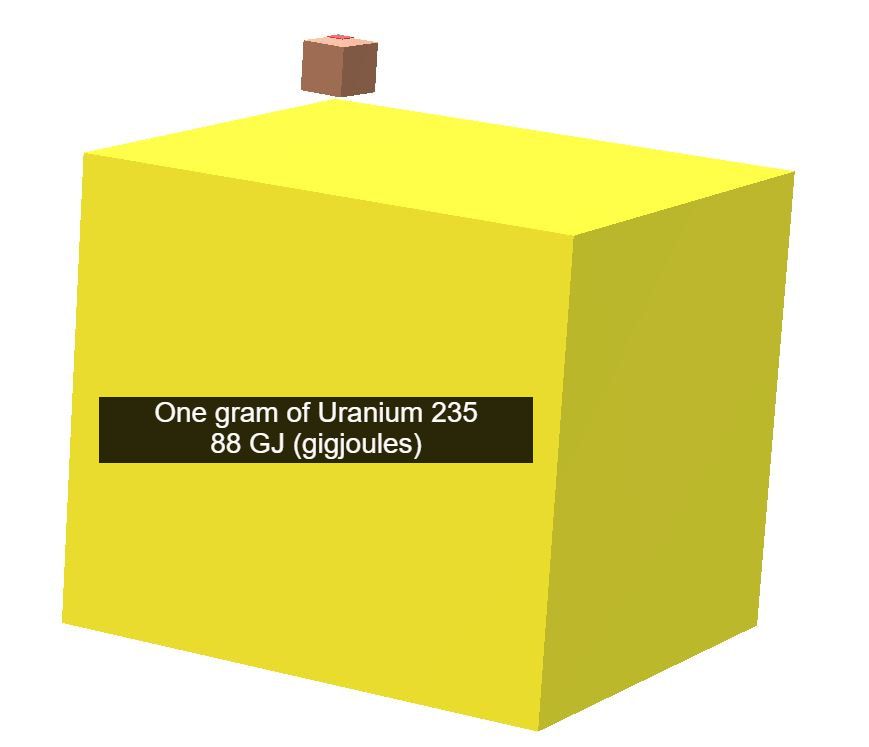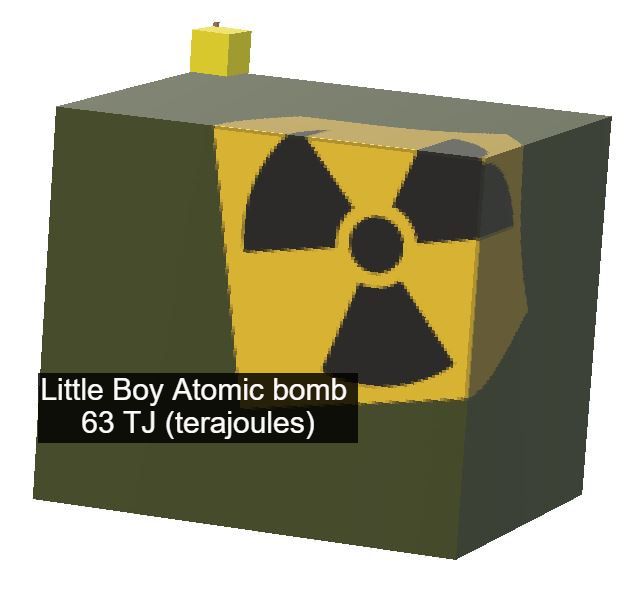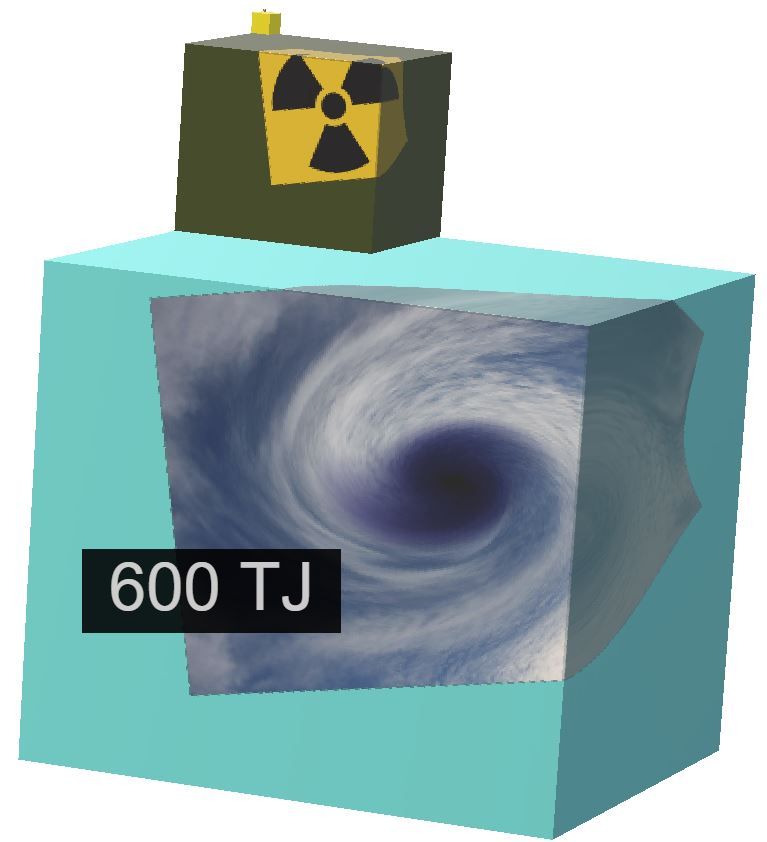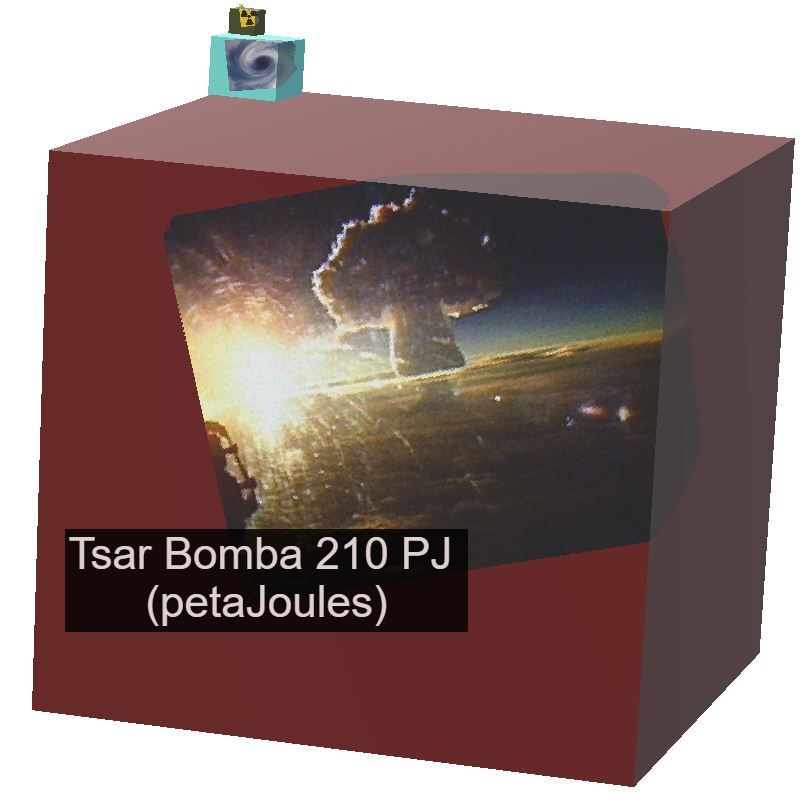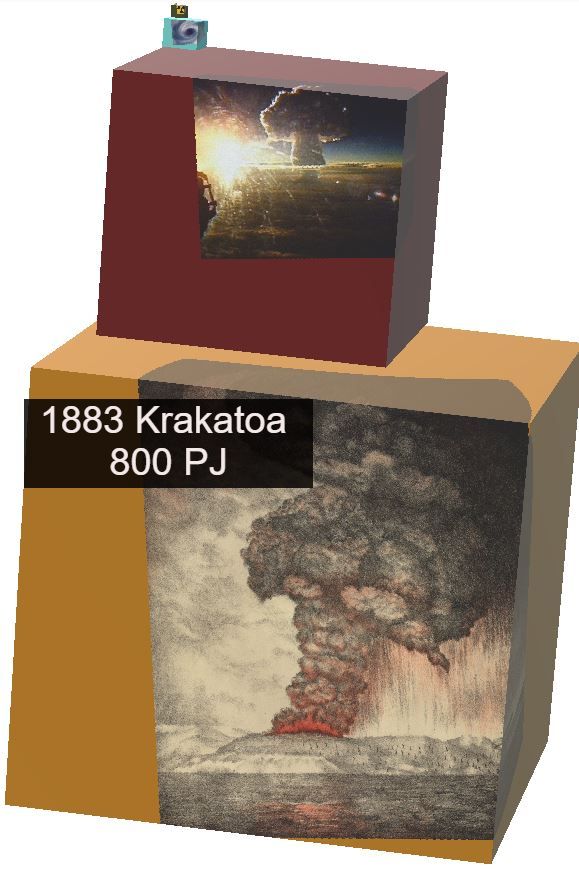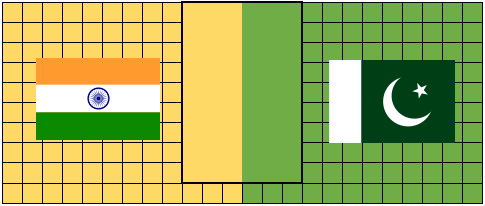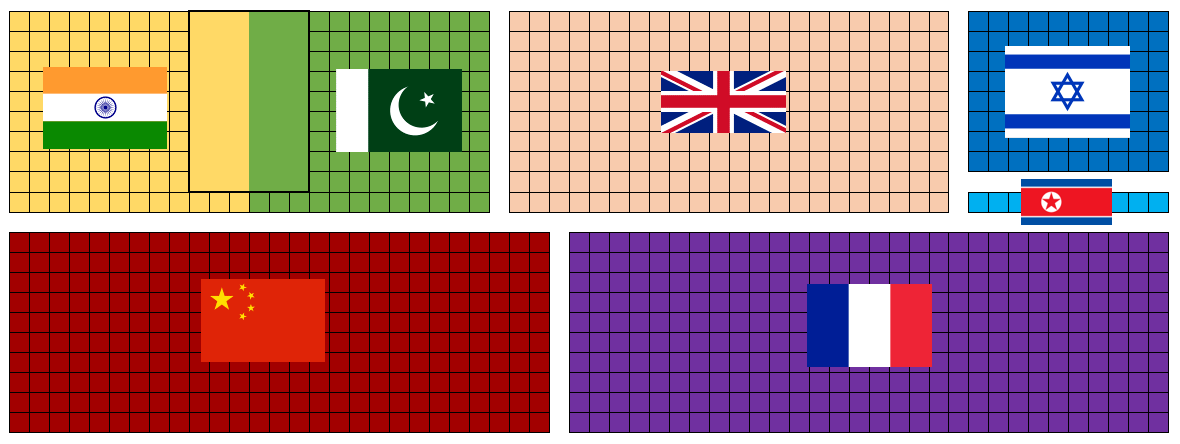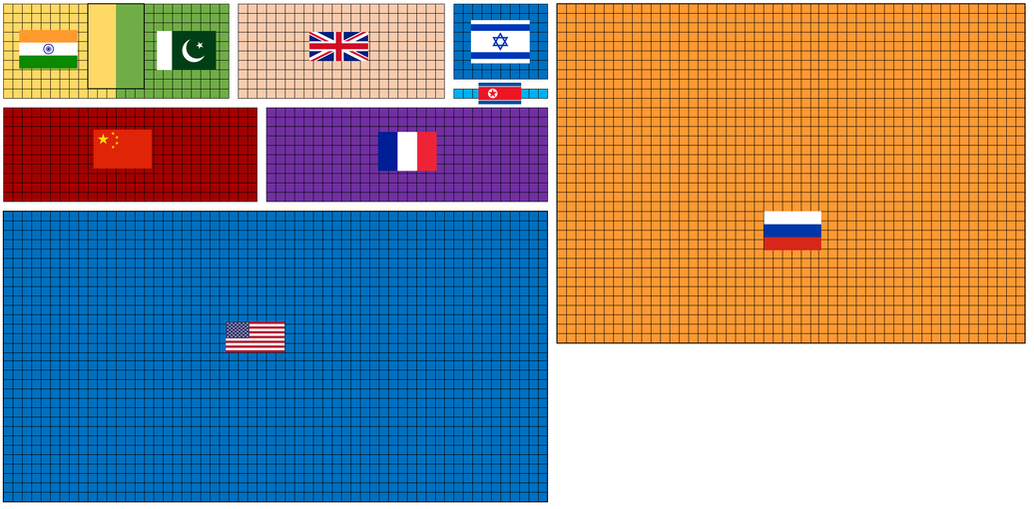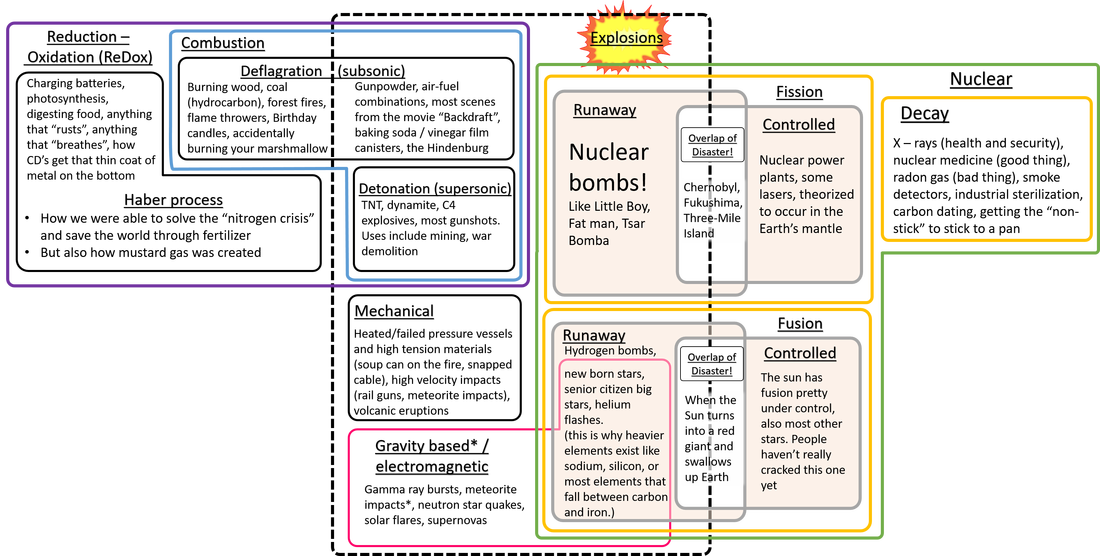|
Just in case it wasn’t clear before, nuclear weapons are always a bad thing. I would love to end the post there, but unfortunately, a former reality television character who stumbled into a decision making seat, thought having “nuclear like you’ve never seen before” would somehow be a good idea. Again, just to clarify, it isn’t, and never will be. Let’s start from the beginning. The story of energyLife takes energy, it is something that is pretty vital to anything that’s alive. This is why eating food is such an important part of our day. As things (you and me) that need energy, there’s two ways you can get ahead:
This is something that kind of happens without thinking. Over millions of years, the body has come up with great ways of influencing your energy cycle, largely through discomfort.
The issue with this system is that eventually you'll hit the energy ceiling. I don’t care how much spinach you eat or how many sweaters you put on, you will never be able to get from your home to the upper atmosphere and back before dinner. Soooo all of this is to say, us humans needed to devise some clever ways to solve this internal energy crisis, to break through this ceiling. Turns out the solution wouldn’t be internal at all, but external. Our digestive system does a good job of converting chemical energy from some of the things we eat, but not like, you know, rocks and wood and stuff. So how do you harness the chemical energy of stuff you can’t digest? BURN IT! So that’s what we did.
It was one of the most successful meetings of all time. As a result we now had a reliable method of energy conversion that takes place outside of our bodies. Pretty sweet. So we got right to it, converting boring old wood potential energy into, sound, light, and heat energy, via combustion. I'd love to get into it, but all you need to know is that Joules are a derived standard measure of energy. ONE Joule is in the top left of the image on the far left (top for mobile readers), each successive image includes the ENTIRE previous image in some manner. People and fire got along pretty well for a long time. It gave us heat, so we could live more comfortably in places that otherwise would be rather cold. It gave us light so we could stay up in darkness, and chat about the meaning of life, the universe, and everything. But fire also yielded a whole bunch of less obvious spin-offs like protection from scary predators, It made food that was difficult to digest, easier to digest and food that we couldn’t digest at all, digestible. Less energy spent by our digestive system breaking apart tough meat tendons and root fibres, or getting sick from eating parasitic meat, or running from tigers meant more delicious energy could fuel our big brains. Basically, our energy budget had been drastically increased with the advent of fire, and all sorts of things we couldn’t afford before were now being snatched up by early humans.
There were still some issues though. For the first point, no amount of “wood burning” would ever be able to send vessels a kilometre under water, it’s just too clunky and cumbersome. And forget about putting people up into space, wood would never be able to burn energetically enough to get anything off the ground. As for efficiency and effectiveness, eventually you’re gonna reach that familiar ceiling that we faced before, which no amount of increased efficiency can surpass.
But wouldn’t you know it, turns out there is more wood we can burn! The only difference is this wood is really, really, really, really old. This old wood is more commonly known as coal. Fossil FuelsAll Coal was formed about 350 million years ago (MYA), during the carboniferous period. "Carboniferous" literally means "coal bearing" in Latin. Typical coal didn't form before the carboniferous period, or after. Only during. This is because the circumstances on Earth were just ripe for coal formation to occur. Plants/trees were huge and widespread because of the massive oxygen content in the air (30% more oxygen than today), and fungi hadn't yet figured out how to decompose trees like it does now. So when trees died and fell over, nothing really happened...until conditions got swampy and peaty, and more sediment piled on top. about 300 million years worth of sediment. All that time, heat, and pressure basically condensed these old plants and trees into coal. Now instead of needing like 12 logs of wood for a big fire, you just needed one shovelful of coal (don't quote me on that calculation)
Oil and natural gas are have a pretty similar origin story, except instead of plants and trees, it's microrganisms that died and were buried. Then, just the same, the slow passage of time and pressure turned them into different petroleums (Latin : Rock + oil). Other than their different starting materials, oil is also different because its creation isn't exclusively defined to one era, like coal.
Here’s where I could super easily get distracted, and talk about how the majority of the world’s energy production comes from the same basic burning chemical reaction -
some energy + hydrocarbon + oxidant = more energy + some garbage + water - that we stumbled upon time immemorial, and how it’s a bit insane to think we’re fundamentally still just burning stuff. But at the same time you gotta sympathise with the people today who support fossil fuel usage today because, hey! burning stuff is what got humans to where we are today, it’s what we do! I mean who doesn’t like throwing some junk on the campfire and seeing what happens? And isn’t a coal burning plant kind of like a big campfire in the middle of a city that hundreds, thousands, millions of people like to stand around for warmth, security, and comfort? And even if, by today's standards, burning fossil fuels at the rate we do is irrational, people form irrational emotional connections to things over way shorter a time period than a million years. Like there’s this coffee mug I found on the side of the road that I am reluctant to get rid of, in lieu of just not having a garbage coffee mug. But I guess me being reluctant to give up my garbage mug will probably never result in the end of civilization as we know it. so maybe we should all move on from burning stuff, and I’ll get rid of my garbage mug. But I’m not talking about minimizing fossil fuel consumption or climate change, I’m working my way towards why nuclear weapons are never good. Hang on we’re gettin’ there, a bit more on how we use energy first. I’ve recently learned that the actual thing in common possessed by all things on the “burning stuff” train, is a certain genre of chemical reactions called deflagration. Deflagration falls under the category of the very familiar collection of processes known as combustion. Alongside deflagration, also in this category is the also quite familiar, detonation.
If I’m being perfectly honest with myself, the distinction seems mildly arbitrary, but whatever. Point being, depending on how fast something combusts, it will have different applications. I’ve been talking thus far about how we take advantage of deflagration in things like fires, furnaces, transportation, etc… basically anything using a fossil fuel. But what do we use detonation processes for? And how do you get the process to release energy fast enough to be supersonic anyway? This confused me quite a bit at first, because as much as I find chemistry interesting, it doesn’t feel the same way about me.
So THIS is where people got super clever and tricky. Around 1846, Italian chemist Ascanio Sobrero figured out a way to speed things up. But first, just what exactly, was Ascanio Sobrero speeding up? CombustionCombustion is an energetic, exothermic (exo = out, thermic = heat) process because adding some energy and oxidant to a fuel is enough to break apart molecular bonds in both. The recently single fuel atoms, like carbon, quickly find new mates that they have stronger, more stable bonds with, like oxygen, forming the very stable (but more importantly, more stable) CO2.
And what do all tightly-bonded, new couples do? They make a bunch of heat. This heat making continues to inspire other atoms to leave their relationships and find their soulmates, which they do. This molecular love-fest will occur as long as there’s fuel, oxidant, and heat around to keep the party going.
If you revisit the fossil fuel energy blocks up there ↑, a funny thing is that the nitroglycerin block would look almost identical to the natural gas block. What my energy blocks don't visually represent is the TIME it takes to expend energy, or the volume of space in which they are spent. So even though a kilogram of nitro and natural gas have the same energy output, they combust at very different rates. This Italian revelation opened up a whole new world of blowing stuff up. To clarify, explosion does not equal detonation. In the same sense that all dogs are animals but not all animals are dogs. Speaking of categories, let's update our chart. AHH! Nuclear! We’ve finally made it. It took over 2,000 words to get here or about a million years depending on your preference, but we made it. Now we can legitimately get off of the burning stuff train and on to the nuclear train. At least partially anyway. The power of the atomBetween 1880-1920, scientists really wanted to figure out what "light" was all about, so a lot of time was devoted to that.
The energy driver for combustion, which has been our huge producer thus far, is to break apart molecules and have them form new molecular bonds. By another description, combustion (and all Redox reactions for that matter) are largely an electron based process with the electrons swapping about between atoms and amongst molecules. The amount of energy required to get these electrons moving around isn’t enormous (sometimes), which is why lighting a fire can be done with something as mundane as a hitting a couple of rocks together. But to get at that tempting energy nugget at the heart of the E=mc2 equation? To unlock that unfathomable amount of energy inside the nucleus of an atom? One would first need a ton of energy. Way more energy required than what you can get by hitting rocks together.
And this crazy amount of energy is just sitting in this mosquito, barely any of the energy is elsewhere in the football stadium. This issue of provoking fission has two avenues towards being solved;
Turns out there’s some super willing nuclei that are all too ready to be broken apart, they just need to be poked.
Nucleons (protons and neutrons) are held together by the cool sounding strong force. The strong force is one of the four theorised, widely accepted fundamental forces. It’s also the strongest of the four. It’s schtick is that it only operates at ridiculously small distances, but when it DOES act, whoa boy, hold on to your butts cause she ain’t lettin’ go. When I say the strong force only operates at very small distances, I mean like those found in the nucleus of an atom. "Mosquito in a stadium" small. Once you leave that zone it becomes pretty darn negligible. That's why you're not stuck to the chair you're sitting on via strong force. Another force acting on the nucleus, is the electromagnetic force (think trying to put two “north” ends of magnets together) Even though positively charged protons absolutely HATE being next to each other (due to their same charge, like the magnets) the strong force binds them all together in the same house and it does this really well...with small groups. Regardless of how much the protons want to jet away from one another, the strong force has created such a fortress for the nucleons, that you can’t separate them unless you have mustered the crazy amount of energy (binding energy) required to break down the fortress. Only then will the atom break apart, and when it does break, HUGE energy release. In a uranium atom there are so many nucleons crammed into the nucleus, the strong force has a harder time corralling them all into the fortress it built, after all, it can only extend so far. So uranium has this jam packed strong force-tress, with a bunch of nucleons itching to get out. Kind of like our buddies the carbon and hydrogen atoms, who didn’t want to be with each other, but with sexy oxygen instead. But UNLIKE the carbon atoms, they just want to get out, they're less picky about how they end up. People can use knowledge of this instability to their advantage;
These last two bullets, controlled and runaway are kind of like the nuclear version of our old pals deflagration and detonation.
Here's how uranium powered fission energy stacks up against our last combustion example. Hhmmmmmm. Nuclear energy seems to be on a fundamentally different level then anything that came before it. Like a really different level. And that's ONE gram of uranium! Your iPhone weighs almost 150x that! Imagine what 700ish bonfires on a beach might look like.... That's all in a gram of uranium. Well that’s great! That means we can stop burning so much coal and switch to the vastly more effective and relatively safer nuclear energy!
Apparently it's fine for energy production to cause plenty of death, as long as it is spread out over decades and doesn't grab headlines... Well at least we can switch all of our explosives to NUCLEAR explosives! Whoa, whoaa… let’s slow down. I think our old way of thinking that "worked" for tens of thousands of years, might not work any more. Maybe we shouldn't just keep turning newly discovered energy sources into explosives. "Rain of Ruin"Up until 1945, wars and violence in other parts of the world were just that, in other parts of the world. It would be terrible, devastating, but contained. It didn’t matter how many arrows, cannon balls, shells, or missiles were launched back and forth because at the end of the day, the amounts of energy involved basically just affected that time, that place.
But if you treat NUCLEAR weapons with the same lackadaisical demeanour (fire them back and forth until someone stops), enough energy can be released to basically ruin the entire planet and everything on it. This last point is a mild concern of mine, falling somewhere between dying in a plane crash and meteorite impact. People now have command over the types of energy scales that were once reserved by nature, which as far as I’m aware, has no political, religious, or ideological agenda of any kind. The Manhattan projectBack on a fateful day in July, 1945, the United States had a “successful” nuclear explosive test codenamed: Trinity. Successful, because it demonstrated practical application for war of this runaway fission effect... before the Nazis could. It was the result of $2 billion (more than $23 billion in today's dollars!), four years of effort, and a literal all-star team of international scientists. The day the fateful test occurred, was steeped in mournful excitement. Excitement, because of humanity entering a new age of energy, and the dramatic culmination of decades of scientific and engineering accomplishment. Mournful, because of the absurd power that, prepared in a specific manner, would always ruin lives. They must have told the scientists ahead of time to prepare some epic quotes for the historic day. After the project leader, Oppenheimer, saw the sinister fireball growing in the distant New Mexican desert he famously quoted a passage from a Hindu scripture; "I am become death, destroyer of worlds." Also after witnessing the "foul and awful display", the markedly less flowery Kenneth Bainbridge uttered the equally poignant; "Now we're all sons of bitches." Bainbridge would devote much of his life after this point to ending nuclear testing. Regardless of comments, humanity (or the US President in this case) now had the ability to perform (un)natural disasters. conspiracy breakHere’s the crazy thing, conspiracy theorists get ready! The Nazis surrendered in May, the US successfully tested a nuke in July, and in August they used it TWICE on Japan. Think how long it takes you to make an important or life changing decision, think about how slow the government is to make and implement important decisions.
Some people think that due to the “untimely” surrender of Germany, the US had to rush to test their new toy in the field before the war completely ended. Unfortunately Japan was the only major member of the Axis still fighting. So did they drop two bombs on Japan because it was necessary, or because they wanted to see what would happen? In either case, the fact remains a few weeks is an unbelievably short amount of time to weigh the pros and cons of using nuclear weapons on civilian populations. and in defence of EinsteinEvery now and then, I’ve heard people casually reference Einstein and his work as terrible, because it preempted and allowed for nuclear weapons. This is flawed for so many reasons, but just in case you were on the fence about it here’s why you shouldn’t be, from most to least obvious; “But Einstein made E=mc2 and that’s how nuclear weapons work!”
“But Einstein did the Manhattan project and that made the bomb!"
“But Einstein recommended to the president that they make a bomb in the first place!”
Of course, like everybody, Einstein had many flaws. Especially in all areas of his life that involved love. One of his kids, Eduard, had schizophrenia and his mother, Marić, cared for him exclusively. After she died, Eduard was permanently institutionalized. While Einstein was married to Marić and just after Eduard was born, he frequently sexted his former lover. Then after all that, he married his first AND second cousin (like, the woman was cousins on Mom and Dad's side :|). I don't even know how that works on the family tree. The guy had some issues, just stop thinking he's to blame for the nuclear mess that we're in now. And while we're here...he was a perfectly productive student as a child, though had a mild disdain for authority. Before the tangent, I was comparing nukes to natural disasters. Many natural disasters have comparable energy expenditures as nukes and even much greater, but they don’t all use the energy in the same way. Terrible earthquakes, tornadoes, hurricanes, tsunamis never “explode”, they are more like crazy strong power plants, releasing unbelievable amounts of energy, but on a scale of minutes, hours, and days. Volcanoes are different. When volcanoes expend energy, they do it all at once (sometimes). No hurricane, flood, earthquake, or tornado has ever caused a mass extinction; but volcanoes have done this many times. Once again, nuclear bombs are like volcanoes. I think the best way to show this by going back to our energy scales diagram So what happens when all this energy goes bang all at once? Well it depends where it goes bang. In the case of a volcano, usually there’s a bunch of rocks, dirt and hot gas in the explosion. This stuff proceeds to get pulverised from the explosive force into a fine dust and just goes everywhere and makes a big mess of things. Similar to how baking soda / vinegar volcanoes make a big mess of things. Though instead of needing a bunch of paper towel, results range from thousands of flights being cancelled to 85% of life on earth going extinct. Nukes can go off anywhere, near the ground, in the sky, up in space, on the water, underwater and each comes with it’s own set of dangers. But since nations are most interested in destruction, their method of choice is "air burst" because it "inflicts maximum damage on ground structures". A ton happens in the fractions of a second and weeks after a nuclear bomb goes off, an explanation worth understanding and best explained through YouTube, so have at 'er.
Once these fires start, and they do start immediately... well, you know how fires work when they’re big. This is what happens when there’s too many nuclear explosions and resultant fires:
Now I know what you’re thinking; “But Mike, isn’t this a bit overblown? I mean, wouldn’t we have to, like, blow up all of our nukes for this to happen?” Great question, but; “No. We would only need to use a small percentage of the world’s nukes for this to happen” How many nukes is that? How small of a percentage?
Just because WW2 ended, didn’t mean that nations scrapped their research on nuclear weapons. Actually, research ramped up. If the US was the only world power that could drop a nuke, it was an incredible tool for leverage, it would always be an ace up their sleeve. So the US kept doing more research, but other countries (notably the USSR) did theirs as well. Once more, who has this kind of arsenal of around 50-100 15 kT bombs? Well, India does. And Pakistan does too. Although the kilotonage might be a bit smaller than 15 kt a piece. Let’s say India and Pakistan each decided to hurl 25 or 50 nukes at the other country, the effect would be very similar to a single Indonesian volcano eruption in 1816, which caused the “year without a summer” all over the world. This would be a world wide average drop in temperature of 2°C in as quickly as 10 days. For context, the scary climate change figure of 2°C average global warming, probably won’t happen for another FORTY YEARS (if we don’t change our ways). So, a 2°C swing warmer could take 40 years and is a hotly debated item in the news, brought about by decades and decades of poor resource management. A 2°C swing colder could happen by the end of NEXT WEEK(!!!) if India-Pakistan tensions boiled over today. For the record, I think they both deserve spots in the news. It’s a good thing India and Pakistan aren’t constantly at odds with one another...oh crap. But we could get through that. Even if Pakistan and India emptied their WHOLE arsenals at their enemies, besides utterly destroying the region, the world would only have a couple of pretty bad years of famine and radioactive fallout. But we could get through it. Eventually. But what about the USA and Russia? People seem to talk about them a lot when the subjects of Nukes are brought up. Well here's the nuclear arsenal of India + Pakistan: Each square represents one Little Boy 15 kT nuke (remember the little green cube from the diagrams above?). The area encompassed with a thick black border represents the amount required to ruin everyone's day (re: year) And here is the whole world's nuclear arsenal, excluding the US and Russia. Oh man, if India/Pakistan can ruin the world for a couple of years with a fraction of their arsenal, what the heck would happen if the others got involved? (for those who may not have watched the Olympics: UK, Israel, North Korea, China, France) Now here's what the whole world has.... A bit overkill? Don't you think? The powers that be don't agree on much, but they certainly all want enough firepower to destroy the world. ...Oh wait, sorry. Those are just the US/Russia nukes that are on "high-alert", as in, able to strike a target within 15 minutes. Here's the ACTUAL world's total arsenal.... Wtf man? Look how tiny that India-Pakistan "ruin your day" section looks now! The crazy part is that these little squares are all roughly assumed 15 kT, where as the American or Russian squares might actually be 10-20 times the size of an Indian square. No, no, that's not the crazy part. The crazy part is that in 1986, this previous image of the world arsenal would have been 5-6x larger. Why is any of this necessary?! Clearly everyone present can kill everyone else, that's not contested you're all winners wahoo.
You don’t need to be an expert to imagine what would happen if the USA and Russia gave each other the nuclear treatment. But if you’re curious, I think I’d be moving to Antarctica. So no, former NBC’s The Apprentice character, there is no need for more nukes “A nuclear war cannot be won and must never be fought. The only value in our two nations possessing nuclear weapons is to make sure they will never be used. But then would it not be better to do away with them entirely?” March 7, 2018 Edit: Also, Putin, just cool your jets would ya? If you made it all the way down here, awesome! If you're just scrolling to the bottom to see how much is left, I won't hold it against you... :'( In any case, I do have a bit of a conclusion which will be posted soon. For some reason I thought it might be better posted separately, there will be some fun links. If anyone was curious why I had some blank spots in my energy venn diagram...Here's the full thing. Where I learned things (sources)In order of "fun-ness" or "enjoyability" of learning: A Brief History of Energy Use was a good start for me, and turned me on to a very interesting read by Vaclav Smil. I used this timeline as a tool to get started as well.
These helped to iron out the difference between deflagration and detonation. ThoughtCo was helpful a number of topics for more starting points. On Nuclear bombs, I compared a lot to volcanoes, saw the effects on the planet, and perused some peacekeeping initiatives and listened to their podcasts on the contemporary subject. I've also scattered a couple tangential facts or ideas in there, and used a bunch of energy conversion figures between wood, fossil fuels. Also, big props to Wikipedia.
0 Comments
Leave a Reply. |
Archives |
Proudly powered by Weebly
